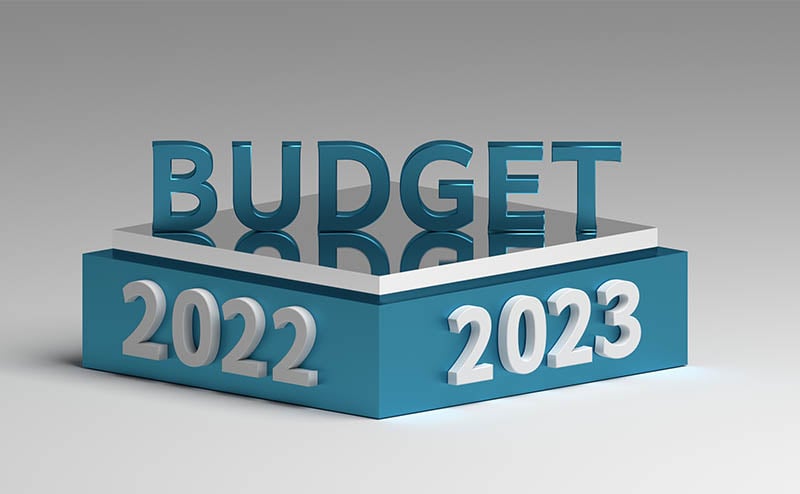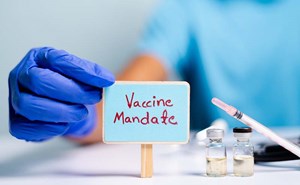I guess I’m in a singing and dancing mood. Last week, I talked about the annual song and dance of dealing with Medicare physician payment reform, and this week, I want to talk about another yearly song and dance ritual that the federal government goes through: the President’s Budget.
Every year, the White House releases a Budget that serves as its official funding request to Congress for the following fiscal year (FY) that begins in October. And that’s exactly what it is: a request. Congress can choose to accept some proposals, reject others, or simply use the Budget as a paper weight. It includes both funding requests for specific federal agencies that would be handled through Congress’ appropriations process as well legislative proposals for Congress’ authorizing Committees to consider. These legislative proposals in the health care space usually involve structural reforms to the Medicare and Medicaid programs and/or private insurance market that would add new or refine benefits; cut costs; or address fraud, waste, or abuse.
As someone who worked on eight of these President’s Budgets during my time at the U.S. Department of Health and Human Services (HHS), I like to see the President’s Budget as an opportunity. It’s an opportunity for the current Administration to display its priorities—to show Congress and the public what it really cares about and what it doesn’t; what it’s willing to invest in and what it’s willing to cut.
The FY 2023 President’s Budget, released this past Monday, does mostly fulfill that purpose. It includes some significant, cross-cutting priorities that are extremely important topics on which to focus, such as addressing our country’s mental health crisis. However, it fails to tackle some critical issues—which, one may argue, also make the Budget a lost opportunity.
While I’m not going to discuss all the health care-related policies, proposals, and funding requests included in the $5.8 trillion Budget, I do want to focus on three priorities (including the forementioned mental health crisis) that are included in the Budget. I also want to mention one of the omissions that I wish the Administration did address.
Mental Health
As our nation goes through a mental health crisis, with increasing cases of mental health illnesses and suicides, the Administration has made mental health one of its top priorities. In the Budget, there are both funding requests for specific programs and ideas for reforms—particularly around mental health coverage in Medicare, Medicaid, and the private insurance market.
With respect to funding requests, the Budget includes a “new $7.5 billion Mental Health System Transformation Fund to increase access to mental health services through workforce development and service expansion.” It also supports community-based mental health and will permanently extend funding for Community Mental Health Centers. Furthermore, it sets aside a significant amount of funding for the new 988 National Suicide Prevention Lifeline, which will go live in July. The Substance Abuse and Mental Health Services Administration (SAMHSA) will dedicate nearly $700 million in FY 2023 to establish this network of crisis centers where there are staff available to answer calls in all areas of the country.
Suicide is the second leading cause of death for children, adolescents, and young adults aged 15-to-24-years old. To address the suicide epidemic among young people, the Budget includes significant investments in youth behavioral health programs. For example, the Budget requests $225 million to “support the development, implementation, expansion, and sustainability of comprehensive, community-based services for youth with severe emotional disturbance.”
The Administration also includes a funding request geared towards supporting the mental health of clinicians. Made possible by the passage of the Lorna Breen Act, which was recently signed into law, the Budget includes a $50 million funding request for another round of Promoting Resilience and Mental Health Among Health Professional Workforce (PRMHPW) grants. The PRMHPW, administered by the Health Resources and Services Administration (HRSA), provides funding to health care organizations and associations to “establish, enhance, or expand programs or protocols to promote resilience, mental health, and wellness among their providers, other personnel, and members.” In FY 2022, HRSA funded 10 awards with American Rescue Plan Act resources. If HRSA receives its $50 million request in FY 2023, it can issue another round of grants with 43 new awards.
Beyond funding requests, the Budget includes legislative proposals that, if enacted by Congress, would help ensure that there is full parity of coverage between physical and mental health among Medicare and Medicaid enrollees and individuals with private insurance. While there is a already a federal law in place that is supposed to guarantee this parity, the Mental Health Parity and Addiction Equity Act (MHPAET) of 2008, it appears that private insurance plans are routinely violating the law’s requirements. In fact, a report issued by HHS and the Departments of Labor and Treasury earlier this week highlights these violations. The Budget therefore includes a proposal that would give federal agencies more authority to enforce the requirements. The proposal would allow federal agencies to regulate behavioral health network adequacy and to issue regulations on a standard for parity in reimbursement rates. Furthermore, the Budget extends the MHPAET to Medicare (since Medicare was initially excluded from the law) and includes proposals to require Medicare and private insurance to cover three behavioral health visits per year with no cost-sharing.
The Budget also tries to address mental health coverage issues in Medicaid. It includes a legislative proposal that would prevent states from “prohibiting same day billing and allow providers to be reimbursed for Medicaid mental health and physical health visits provided to a Medicaid beneficiary that occur on the same day.” In addition, the Medicaid proposal would require that “Medicaid behavioral health services, whether provided under fee-for-service or managed care, be consistent with current and clinically appropriate treatment guidelines.”
COVID-19 and Future Pandemics
As referenced in a recent Regs and Eggs blog post, the federal government is running out of resources to continue its COVID-19 response efforts. A few weeks ago, the White House made a specific request of more than $22 billion in additional funding. Congress wound up not including any of that in the omnibus appropriations bill it passed, and as a result, programs like the HRSA Uninsured Program have come to an end. Furthermore, HHS recently announced that it may not have enough funds to purchase vaccine doses if another variant of COVID-19 requires everyone to need a variant-specific booster.
The Budget actually doesn’t address this immediate need for COVID-19 funds (although the need definitely still exists). Instead, it requests $81.7 billion over five years to help different federal agencies within HHS boost up their capabilities and prepare for and respond to future pandemics or disasters. As part of this effort, HHS would push towards the goal of making effective vaccines and therapeutics available within 100 days of identifying a new pathogen. It would expand the current Vaccines for Children Program and create a new Vaccines for Adults (VFA) program, which would provide uninsured adults with access to all vaccines recommended by the Advisory Committee on Immunization Practices at no cost. Furthermore, the Budget requests additional funding to replenish the Strategic National Stockpile and build out our capacity to manufacture supplies and equipment domestically.
Finally, the Budget supports the extension of telehealth coverage under Medicare beyond the end of the COVID-19 public health emergency (PHE) “to study its impact on utilization of services and access to care.” Congress has already intervened and extended the waivers to the Medicare “originating site” and “geographic” requirements for 151 days past the end of the PHE. It’s unclear whether the Biden Administration would support a longer extension, and if so, how long.
Advancing Research
Building off the Cancer Moonshot initiative President Biden announced in February, the Budget requests over $90 million in additional funding to support current cancer-related programs at the Food and Drug Administration (FDA) and Centers for Disease Control and Prevention (CDC). The Budget also requests $5 billion for the National Institutes of Health (NIH) to continue establishing the Advanced Research Projects Agency for Health (ARPA-H). Based off the Defense Advanced Research Projects Agency (DARPA), ARPA-H will “drive biomedical breakthroughs that would provide transformative solutions for all patients.” It will initially focus on cancer and other diseases like diabetes and dementia.
Before moving on to the missed opportunity, one other notable mention is a commitment to addressing health care disparities—particularly when it comes to maternal health. The Budget includes investments of over $470 million in funding across HHS to reduce maternal mortality and morbidity.
Now, on to the missed opportunity: Medicare reform. Medicare is an area where there is tremendous opportunity for reforms, and the Biden Administration was relatively silent. One of those reforms that you and I were hoping to see in the Budget was a long-term fix to Medicare physician payments. The Budget does include one proposal meant to incentivize participation in Advanced alternative payment models (APMs), but it doesn’t address the Medicare physician fee schedule (PFS) payment cuts that are expected next year.
With respect to the Advanced APM proposal, under current law, the five percent payment bonus clinicians can receive for being in an Advanced APM expires in 2024, but clinicians don't start receiving a higher payment update under the PFS until 2026. In 2025, all clinicians are slated to receive a zero percent update under the PFS. Staring in 2026, clinicians in Advanced APMs gets a 0.75 percent update under the PFS and clinicians who do not participate in Advanced APMs (and instead must participate in the Merit-based Incentive Payment System) receive a 0.25 percent update.
Basically, in 2025, there is no additional incentive to be in an Advanced APM—and the Budget tries to address that issue by moving up the year in which the higher payment updates begin. The proposal won't affect emergency physicians that much, since most of you do not participate in Advanced APMs. All it would do (if enacted by Congress) is provide you with a small PFS update of 0.25 percent in 2025 instead of zero percent.
The Budget also doesn’t prepare for a trend we are seeing in Medicare: an explosion in growth in Medicare Advantage enrollment. Medicare Advantage (or Medicare Part C) is the private insurance option in Medicare, in which beneficiaries can enroll in health plans to receive all their Medicare benefits (and more). Due to the significant payments the federal government is making to these private plans, they are able to offer Medicare beneficiaries additional benefits beyond what they would receive in traditional Medicare at no additional cost (or a very low additional premium). Medicare beneficiaries are therefore understandably attracted to this option, and the numbers show it. According to the HHS Budget in Brief, in 2023, Medicare Advantage enrollment is expected to total about 32 million beneficiaries, or 53 percent of all Medicare beneficiaries. Between 2013 and 2022, private plan enrollment grew by 15.3 million, or 103 percent.
Medicare Advantage plans have historically been paid around 104 percent of what it costs to provide Medicare coverage under the traditional program. And those payments keep on getting higher each year. While physicians got a pay cut under the PFS in 2022, Medicare Advantage private plans got a 4 percent pay increase (and they could see a pay increase of 8 percent in 2023).
The pay increases and astronomical growth in Medicare Advantage enrollment will have significant effects on the Medicare program and the insurers, clinicians, and beneficiaries that participate in it. First, since costs are increasing so much, the growth in Medicare Advantage may affect the solvency of the Medicare Part A Trust Fund (i.e., move up the date when the Trust Fund may go bankrupt). Second, the trend will lead to increased health insurance consolidation as the larger insurance companies become more dominant in a very attractive and popular market. Third, it will lead to more and more administratively burdensome and harmful practices that we’ve been witnessing in the private insurance market: more prior authorization and narrower networks to name a few. And fourth, it will affect the payments that are calculated for clinicians and facilities in Medicare. Currently, CMS uses data from the traditional Medicare program (fee-for-service) to set payment rates for the PFS and the other Medicare payment systems. These fee-for-service payment rates in turn are used in Medicare Advantage and by many private health plans as well. As Medicare Advantage becomes the dominant Medicare option, there will be less and less data available on which to base payment rates. This could lead to inaccurate payment rates (even more than they are now!) that are not reflective of the cost of providing care. While the growth in Medicare Advantage isn’t all bad, the Biden Administration should be preparing to address these foreseeable issues. However, it does not include any proposals in the Budget to tackle them.
I don’t mean to end on a down note, but it was disappointing for this former HHS Budget staffer not to see any proposals to address these critical Medicare issues. With respect to what was actually included in the Budget, the ball is now in Congress’ court. In remains to be seen whether Congress will work on any of the priority areas in the Budget and eventually fulfill any of the funding requests or adopt any of the legislative proposals. FY 2023 doesn’t begin until October 1, 2022, and, knowing Congress’ tendency to act at the last moment, we probably won’t find out for a while.
Until next week, this is Jeffrey saying, enjoy reading regs with your eggs!






